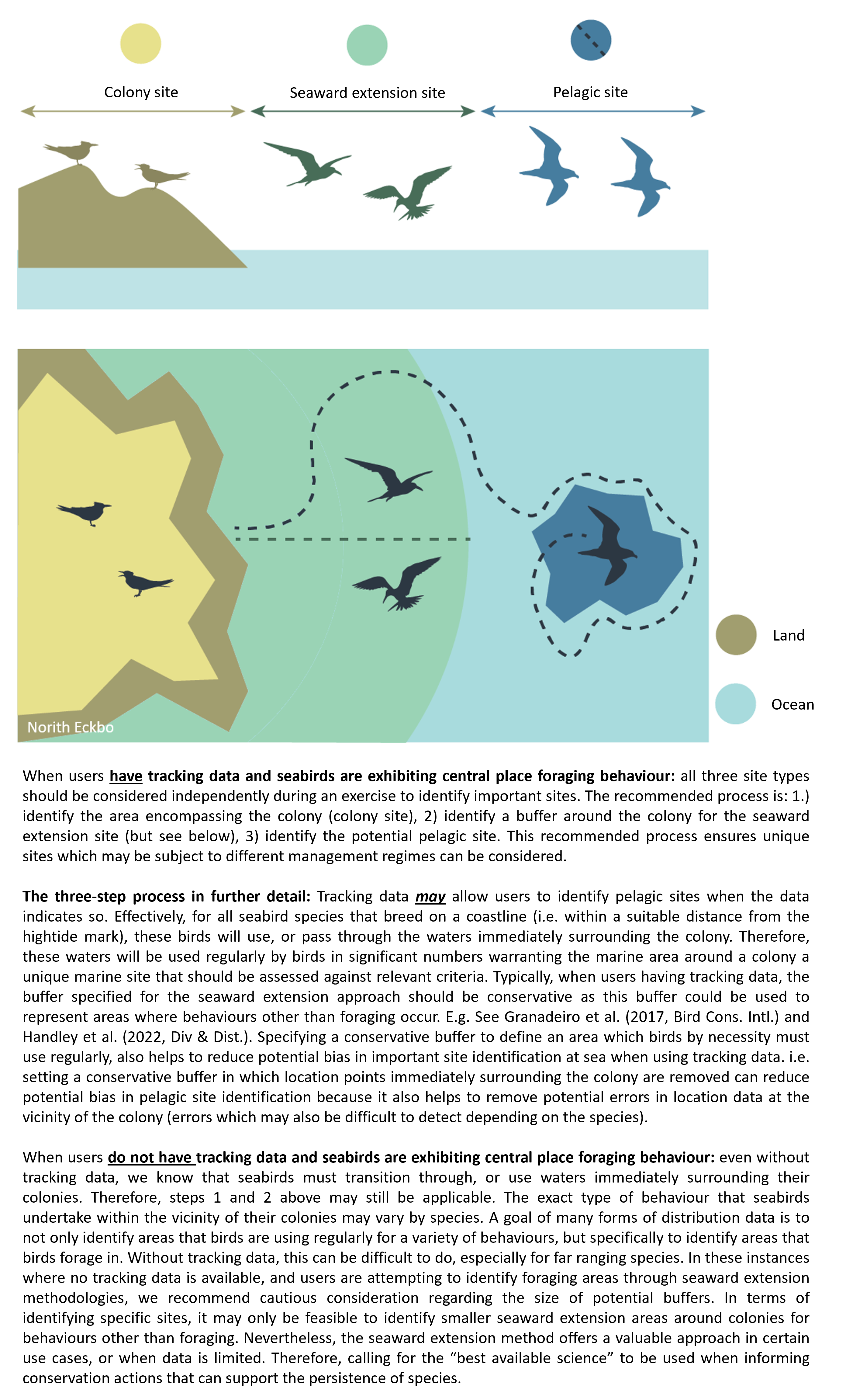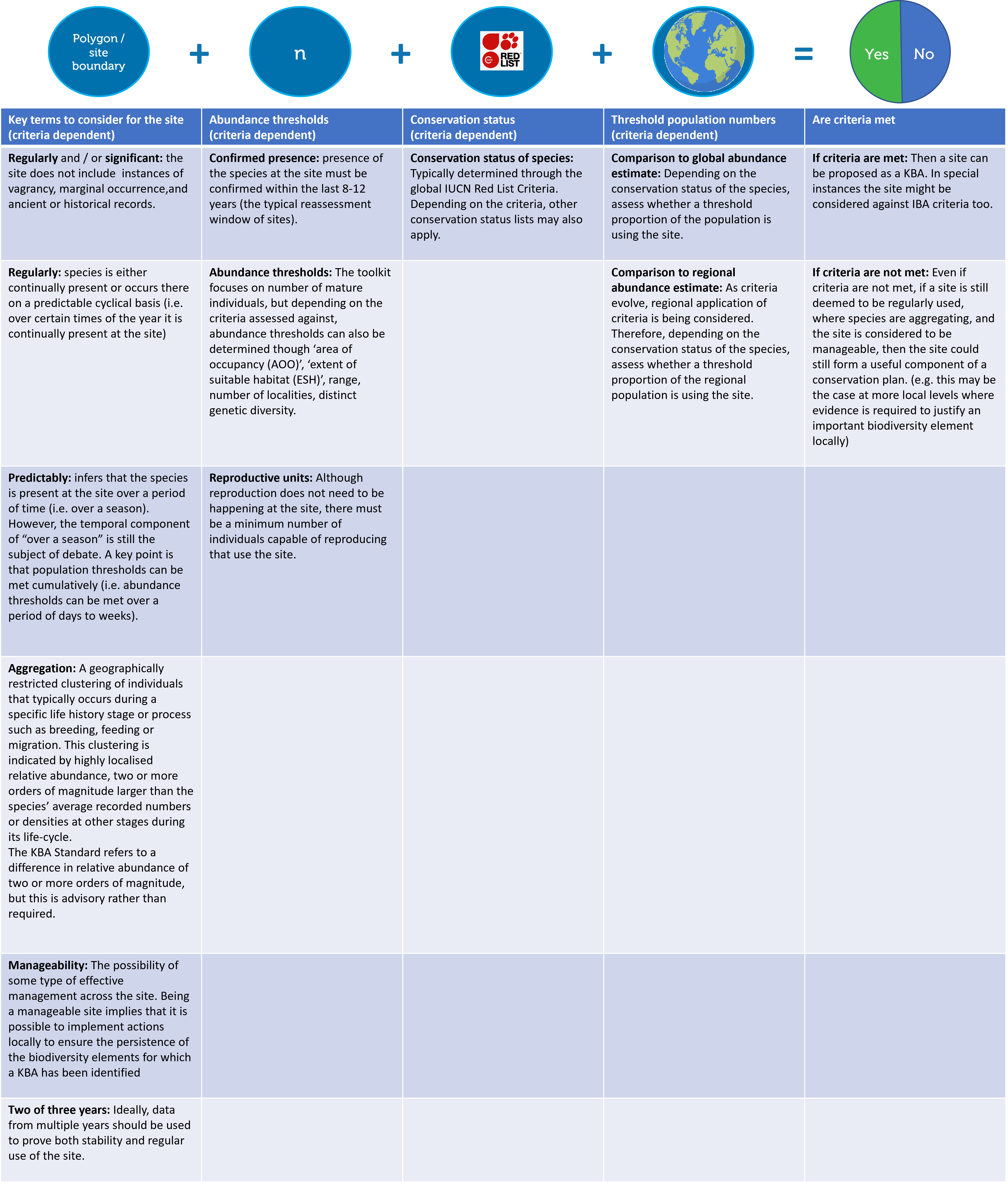10 Sites: Toolkit context
The Toolkit currently supports users to identify three types of sites, based on examples from seabird data.
We advocate for the identification of each site type separately as this process can ensure unique sites which may be subject to different management regimes can be considered.
The three site types are:
Colony sites (i.e. breeding locations, or unique locations where you can typically count animals in a defined area)
Seaward extensions (i.e. sites that are adjacent to land and may be derived from inferred distribution of animals)
Pelagic sites (i.e. truly marine sites typically identified from animal tracking data)
We acknowledge other site types by BirdLife International have been considered for seabirds in the past (BirdLife International (2010)). Future versions of the Toolkit will seek to provide further guidance about methods that can be used to identify these different site types (i.e. Non-breeding coastal congregations, migration bottlenecks)
Further details on each of the three site types for which guidance is offered in the toolkit is outlined below:

In the context of the Toolkit, these sites can support conservation of species in two key ways:
Sites that meet global criteria (KBA criteria, or IBA criteria in special circumstances for birds)
Sites that do not meet global criteria, but still fulfill the concept of a site suited to management measures.
Where the concept of a site that is suited to management measures is one which is: regularly or predictably used by a significant number of individuals deemed to be sufficiently aggregating.
The primary data needed to identify such sites are:
data used to define a boundary which can be considered as a site (e.g. tracking data, or ability to identify a known area used by animals), and knowledge of how the species uses the site. The data should also enable users to create a spatial polygon file (typically a shapefile)
an abundance estimate for the site (the Toolkit focuses on mature individuals as the key unit for determining abundance)
the conservation status of the species (typically the global IUCN Red List Status)
a global abundance estimate
With that data, one can determine whether or not a site meets relevant criteria.
In the toolkit, while we recognise a spectrum of sites, we advocate for, and support the identification of, Key Biodiversity Areas (KBAs). This is because by formally identifying a site as a KBA, the site will have added ability to bring about a change by a decision-maker that supports species maintaining or achieving a favourable conservation status.
Below, summarises some of the key concepts with regards to identifying a site for the conservation of marine megafuana, particularly through a KBA approach.
